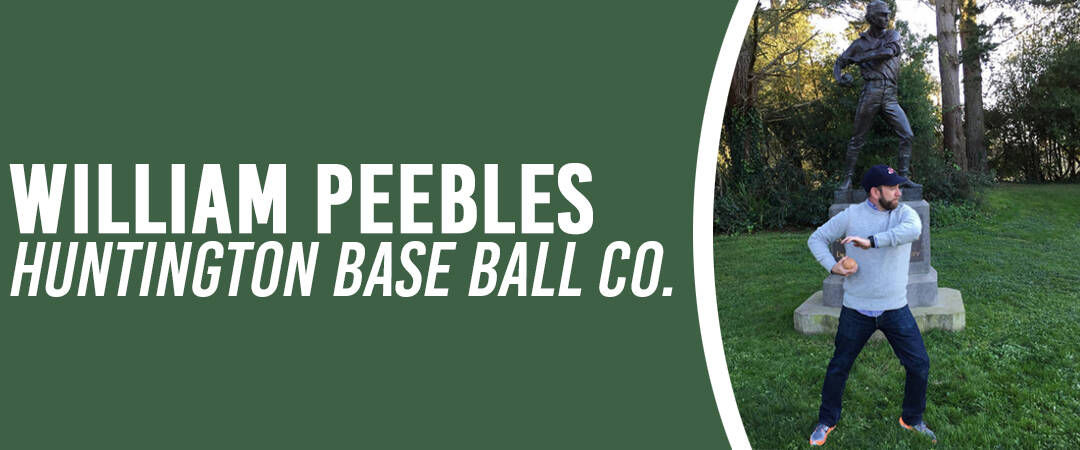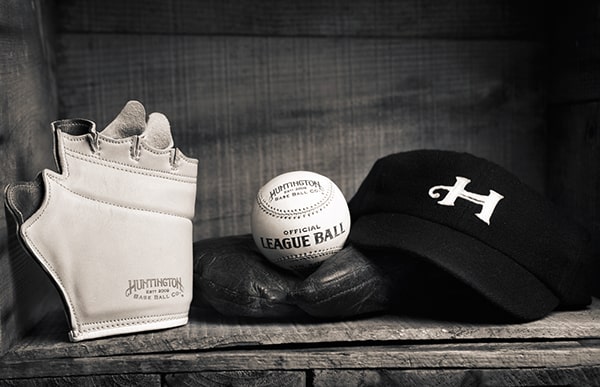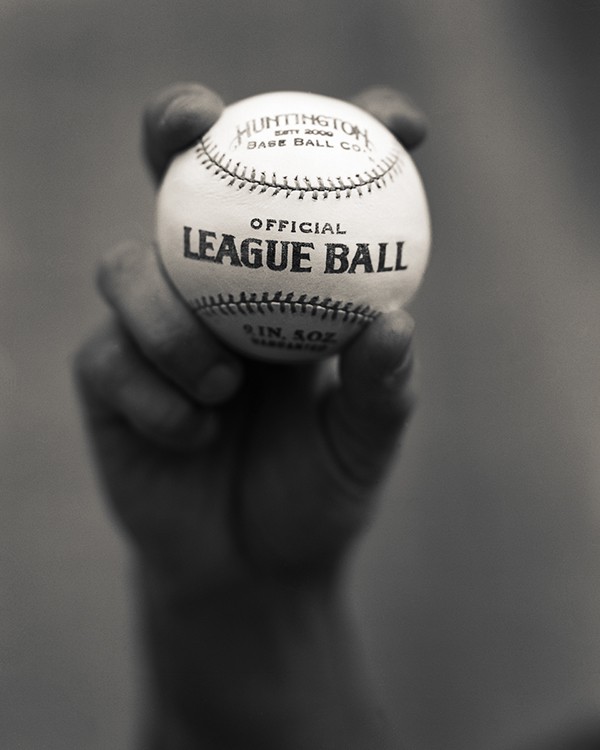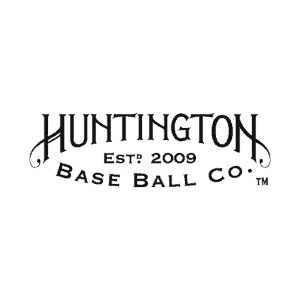
The birth of baseball is rife with myth and half-truths — a French illustration from 1344 shows clergymen at play in a baseball-like game and English ball games such as rounders and stoolball both lay claim to its birth-right but for modern baseball, the history of the game is best told in the United States of the late 1700s when, in 1791 the town bylaws of Pittsfield, Massachusetts prohibited the playing of baseball near the town meeting house. This is the first known writing concerning the game in American letters.The depth of baseball’s history holds it continually in the realm of nostalgia — the sentimental longing for a bygone era and each our own distant youths. As we change yet stay the same, so does baseball.
The game being played by Major League Baseball in the 2010s is similar to that original game written about in the 1700s, what changes are the rules, the equipment. This is the timeline of history that Boston’s Huntington Baseball Company lives in. William Peebles, the purveyor and craftsman behind HBBC, creates hand-made baseball goods in line with the beginnings of baseball, those early single leather panel amateur balls of the 1800s through the 1930s as the stitchings and markings evolved.
My own personal love of baseball started early and peaked in the 1990s but as a young fan, the Major League Baseball strike of 1994 all but killed that love. The appreciation of the game never left, but what I wanted from it had been dissolved from the experience of hearing talk of contracts, revenue sharing plans, and salary caps. Experiencing the handmade balls, bats, caps, and pennants of Peebles and his work through Huntington Base Ball Company reconnected me to the game in a way I thought no longer possible. These are more than simple replications of antiquated curios, but works of art. HBBC does not exist in that world of modern baseball, but the game that existed in the 1700s, the enthusiasm of discovery, of play, of community.
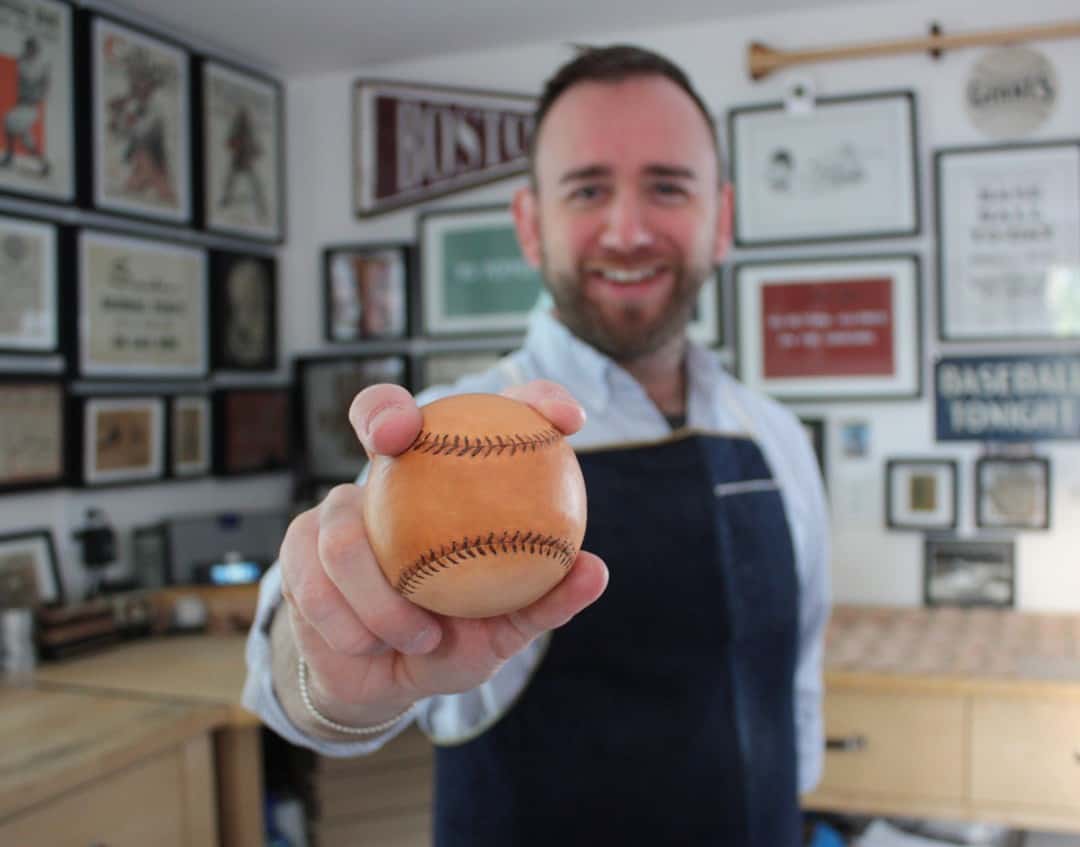
William Peebles of Huntington Base Ball Co.
CJ: What struck me about the Huntington Base Ball Co. is the level of depth to the research done taken to create the bats and balls. With the shifting of players from team to team and the evolving ownership of teams and parks, modern baseball has lost a bit of the magic once associated with the sport.
What you’re doing with HBBC cuts through the superficiality of Major League Baseball and touches on what I loved about baseball as a kid. It’s the feel of the ball, the bat. The glove. I haven’t found anything that cuts through the skeptic in me like your work does. Did you know there would be an audience for Huntington? Are you a collector of vintage base ball gear?
WP: As far back as I can remember I’ve always felt a connection to baseball. I started playing neighborhood ball before I ever watched it in person or on TV. It was just me and a few friends, one on one, or two on two. It was the smallest scale version you can possibly make the game. We just had fun. It feels like we did that for years, but maybe it was weeks. Long days outside in the grass. It was perfect.
At some point I, around nine-years-old, met an elderly neighbor who would listen to the Red Sox on his porch radio and that was what sealed it for me. We’d listen to the game and then he’d tell us old-time stories of baseball in the ’20s and ’30s when he was a kid. It was awesome. He was a batboy for the Boston Braves and caddied for Babe Ruth. Everything he ever told us was of something that no longer existed. To the kid version of me, it was better than dinosaurs. Still is, actually. He and his wife eventually moved to Florida and he gave us most of the baseball stuff he had. I still have his basemitt from the ’20s sitting on my desk. If I could pin everything I’ve obsessed over for the last 30 years on one item, it would be that mitt. Without a doubt.
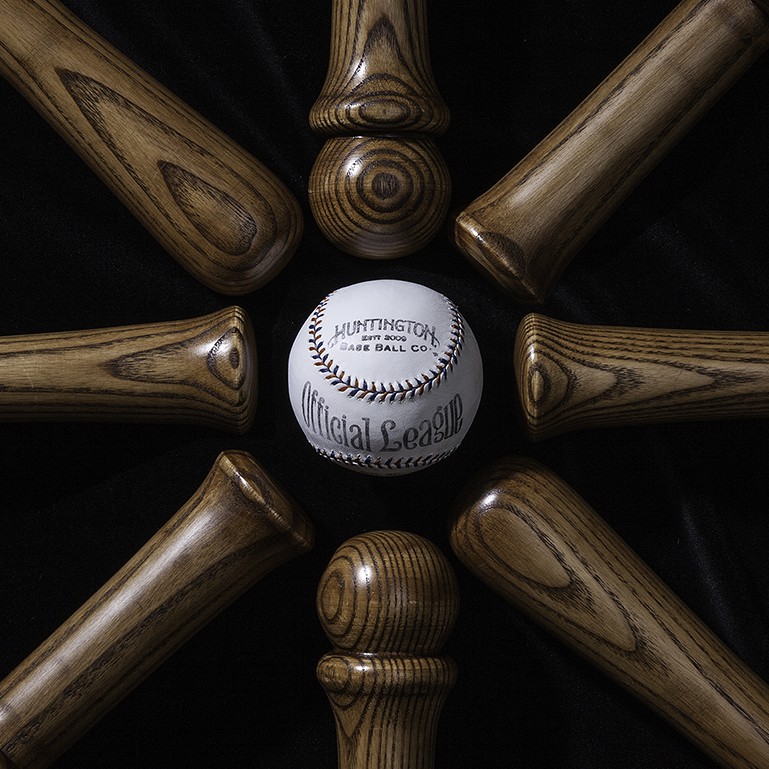
An array of bats and balls from Huntington Base Ball Co.
What’s your background? Before Huntington, did you have a career in baseball?
No. I was just ok at baseball. I loved to play, but I couldn’t keep up once the pitching started getting faster. It was pretty clear that my playing days were going to be over after little league. Lucky for me, that’s right around the time that Upper Deck started making baseball cards. My favorite cards were the illustrated team checklist cards (drawn by Vernon Wells’ dad).
I was just starting to see some artistic talent develop right around this time so I hopped from the ball field to the art room. I didn’t leave baseball too far behind though. Most of my high school art was sports related, inspired by those checklist cards.
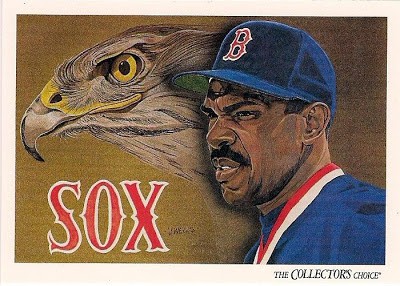
Vernon Wells’ illustrated Upper Deck Checklist Card featuring Andre Dawson, then of the Boston Red Sox
Illustration was also fairly short-lived, I jumped to Industrial Design early in college. That’s really where everything I love seems to come together. I still did a lot of drawing and I learned how to make just about anything. Art school was a really great time where everything from fine art to engineering to sports and fashion was swirling around my head. There aren’t too many places where you can have that experience all the time, everywhere you look.
To be fair, I was on the shortlist of people talking about sports in art school, but I found sources for it anyway. There was an issue of Smithsonian Magazine late in the ’90s that had an article about modern-day guys playing vintage style baseball from the 1800s. That’s the moment I decided to try making a baseball. It failed miserably, but the idea was planted and it stuck with me for the next decade or so.
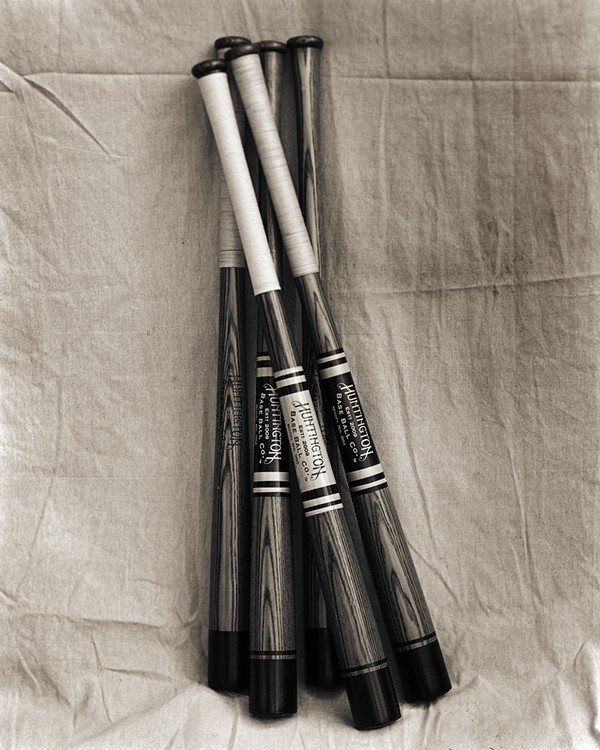
Huntigton Base Ball goods | Photo by Ron Cowie
So you went from being a ‘pen and paper’ type of artist to more of a craftsman, mainly leather goods? Are you drawing or painting at all anymore? Does the ball making take care of your creative desires?
Recreational drawing and painting rarely ever happens anymore. It was a necessary step along the way in my education, and I sometimes wish I could do more of it, but time just isn’t there for it anymore, sadly. Painting, especially for me, was something that I needed a lot of studio time to get good at. I did eventually get pretty good at it, and I could have been better, but I tend to recenter myself every now and then to keep the ship on course. Part of that involves changing processes and developing new skills, sometimes moving on from old skills. I’d love to do more landscape painting though. If I got back into it I think that’s where I’d go. Just for my own satisfaction.
My high school days were all drawing and painting and making “art.” Art school was about developing new skills in design and building, which I eventually put into use as a product designer. It took over a decade of working in various industries for me to really figure out what kind of designer I wanted to be. I never really was all that interested in plastics, or anything synthetic actually, and gradually made my way from housewares to soft goods. Picking up skills along the way that eventually allowed me to make baseballs and bats and other super cool stuff. Some day I’ll paint beaches again though.
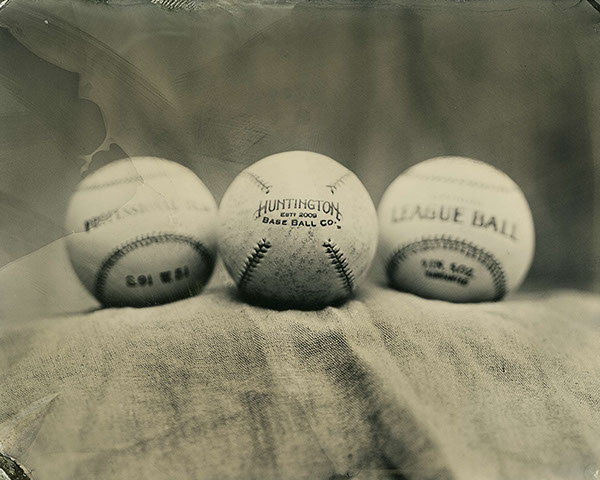
Huntington Base Ball goods | Photo by Ron Cowie
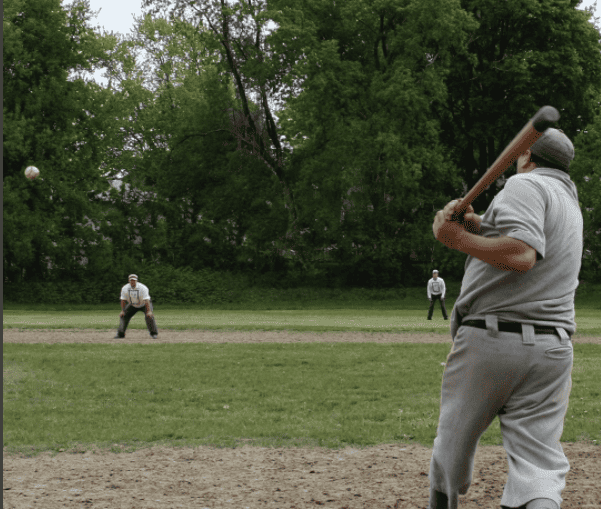
HBBC bat and ball used in a Brooklyn Atlantics and Providence Grays game.
Your HBBC gear has been used in play during vintage baseball games. Are you involved in that world much?
I do not play vintage baseball personally. I’ve given it a shot, and it’s great, but I need my fingers to remain unbroken to do the type of work that I do. A lot of those teams take the field without gloves. That’s a little too risky for me.
I love playing catch with the old style gloves, or no glove if the person on the other end is considerate enough to not break my hand with a return throw, but taking a hot liner off my bare hands is too much for this player. If you’ve never seen a game played under 19th-century rules, I’d highly recommend it. The game is very recognizable but you will notice some differences, like the underhand pitching and different batting philosophies.
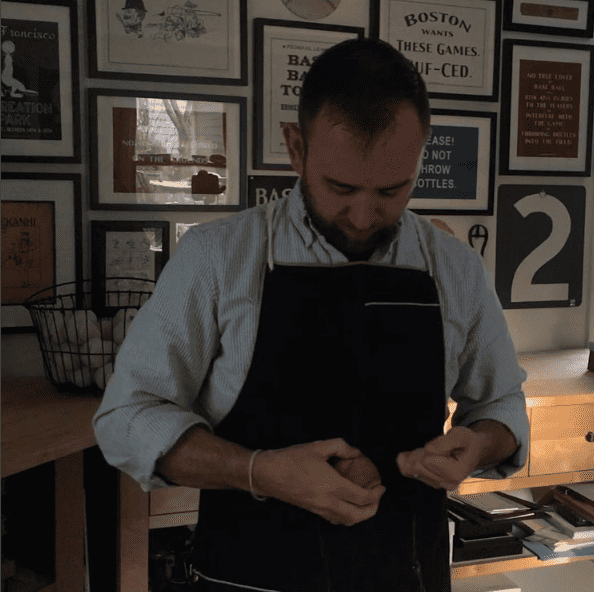
William Peebles at work in the HBBC studio

Huntington Baseball Co. Hand-Made Mitt

The Huntington Base Ball Co. array of products
Are you coming to your work as a historian or baseball fan?
Both. You can be a baseball player and not have any knowledge of the history. Everyone starts that way. To really be a fan you need to know some history. It may only be a season deep, but you see the trends in the matchups, the rivalries, the highlights. Everything begs you to dig deeper. You read the stories then you look at the pictures. When you look at the pictures you see the changes in context, the equipment, the materials.
I’ve always been drawn to the evolution of the equipment. Through photography and collecting baseball artifacts it allows me to keep digging deeper. There are people that have forgotten more than I’ve learned, they are the true historians. Most of my learning has been through following their paths and stepping aside to scratch the surface when I see something interesting. That’s a really great place to be. Through my work, I’ve been able to be a middle man connecting and introducing aspects of the game that other fans didn’t even know existed. That’s pretty cool.
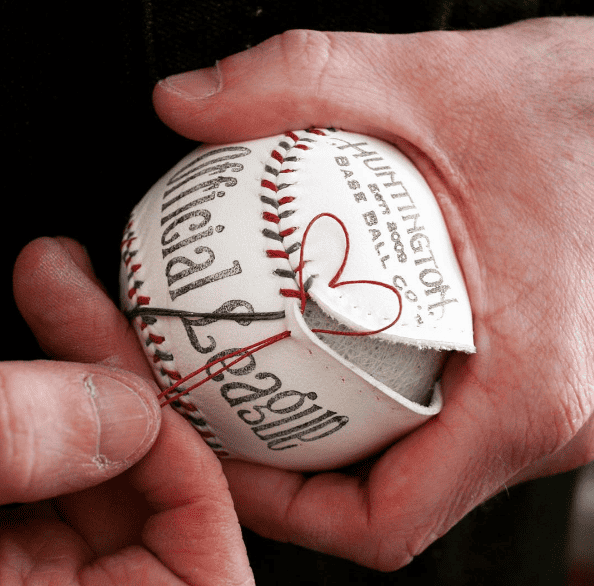
William Peebles stitching a ball
Who are your main customers? Is it all baseball lovers and collectors?
I like to say that everyone knows a baseball fan. Those are the people that I cater to. I’m able to offer something uniquely different in a world where just about everything has been streamlined and value-engineered to fit “everyone.”
Any baseball fan will tell you that when you dive into baseball history, and it becomes your “thing,” you become very picky. Everyone around you says you’re hard to shop for. I like being the guy who solves the question of “what to get for ______,” the person who has everything or is unimpressed with everything else. A lot what I do is customizable too, so that opens the door to special projects and collaborations.
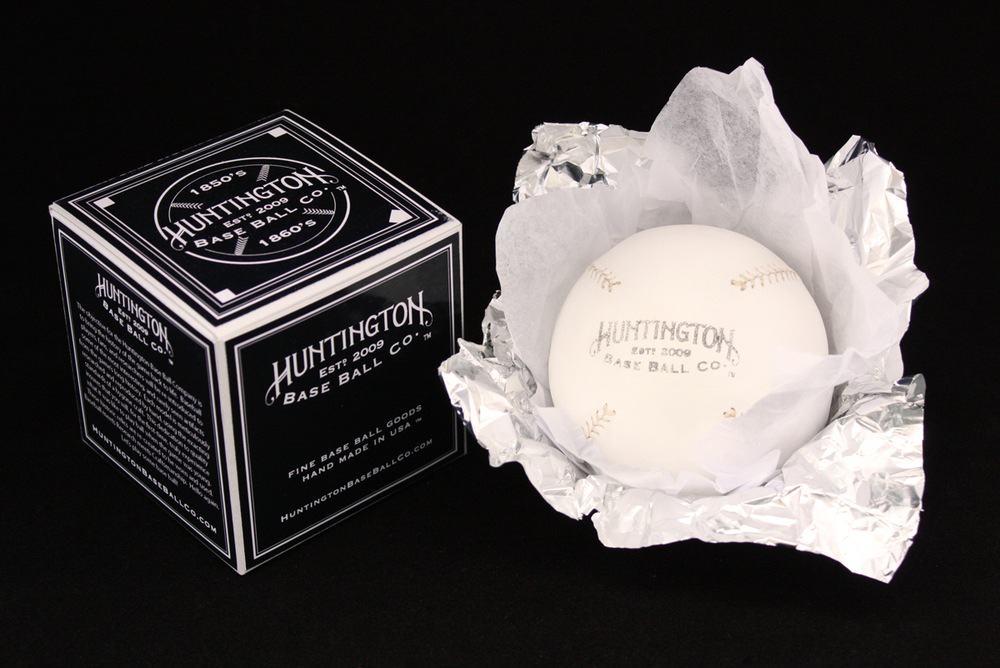
Amateur Ball 1850s – 1860s
With making each ball by hand, how custom are you able to make them? What sort of custom projects have you taken on?
Everything that you can see on one of my baseballs was done by me, and all of it can be customized. From the leather to the stitching to the graphics and the application, the box, and the decoration. There’s a pretty wide spectrum of possibilities.
I’ve done custom projects for the Roberto Clemente Museum, one-offs for Hall of Famers, numerous collaborations, advertising campaigns for major companies, even a Presidential Library. It’s a small shop, but the work is incredibly satisfying. Especially considering this is all just through word of mouth.
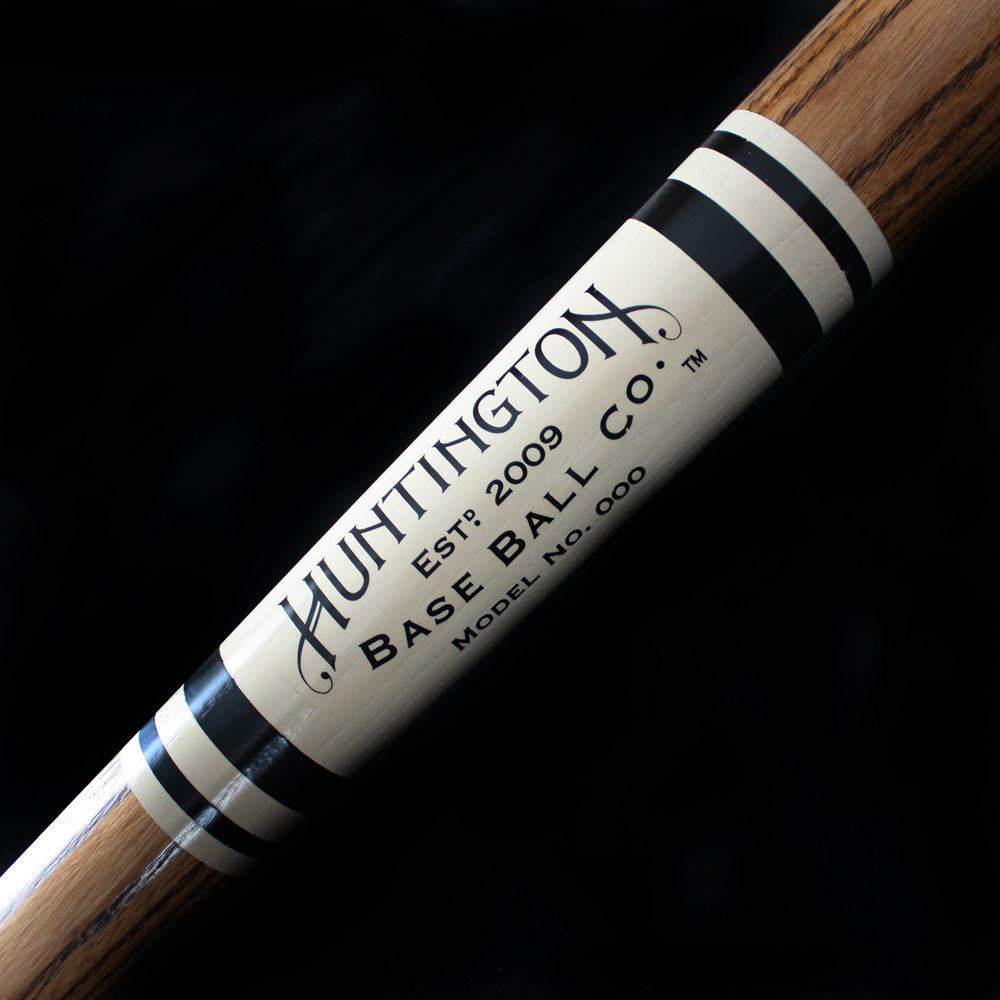
1880’S Style Ring Bat – Model 000
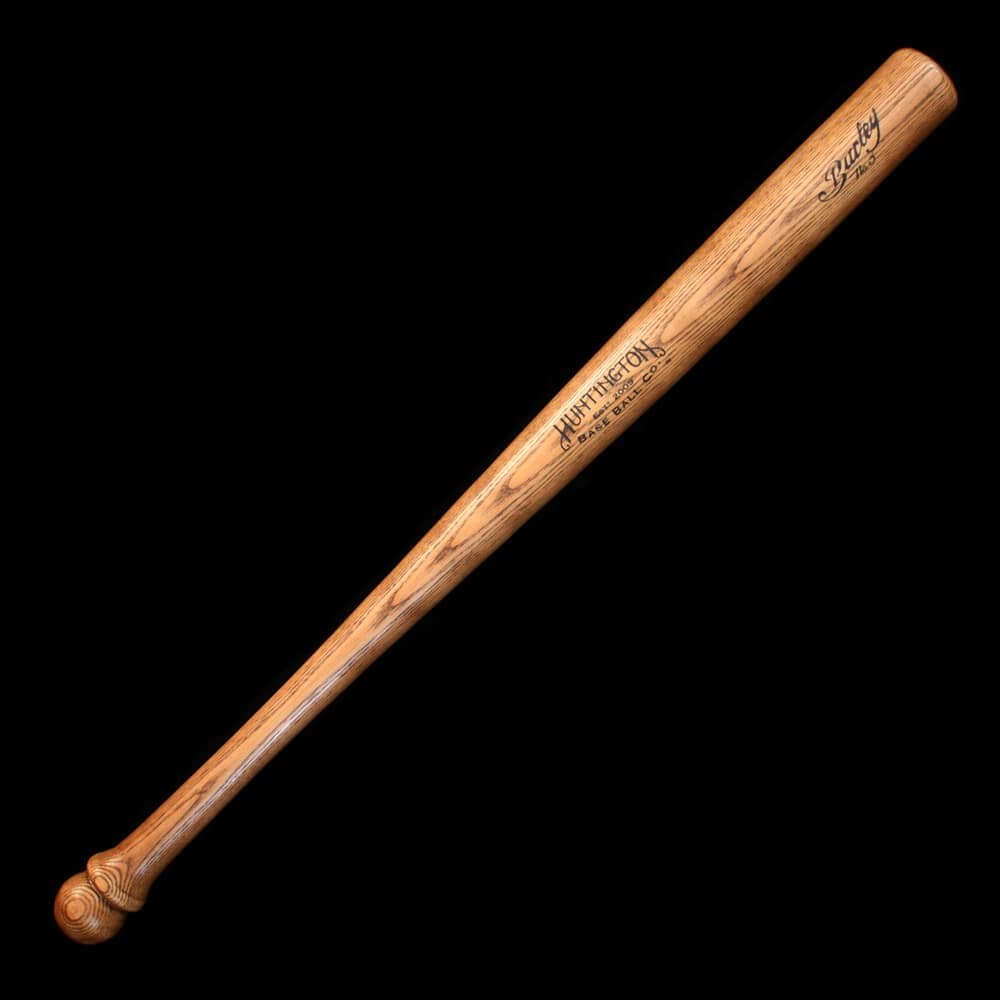
Burley Bat – Model No. 5
The bulk of your bats and balls pay homage to the bygone eras of baseball. Does modern baseball offer you any ideas for future products?
I don’t really focus on the modern stuff because you can get it already. There is a market full of that stuff, some of it is amazing, some of it is junk, very little of it is hard to find. There are a few things from the not too distant past that I will be making though. Short-lived, blip-on-the-radar type stuff that, in retrospect, was oddly interesting.

Huntington Base Ball Co. materials
The balls are all handmade by you, but the bats and hats are handled by other craftsmen. How closely are you working with them to make sure those items match the care you give the base balls?
The guy I work with for my bats is like me. He’s a guy in a workshop with one focus and he’s as picky as I am. Those are the kind of people I like to partner with. If we can go toe to toe on who’s more finicky, you’re my guy.
When it comes to bats, I like the odd stuff, and we’ll dig it up. There’s the world of oddities out there and I don’t know about every piece that was ever made. That’s why it’s important to have good connections. I value the experience of these people.
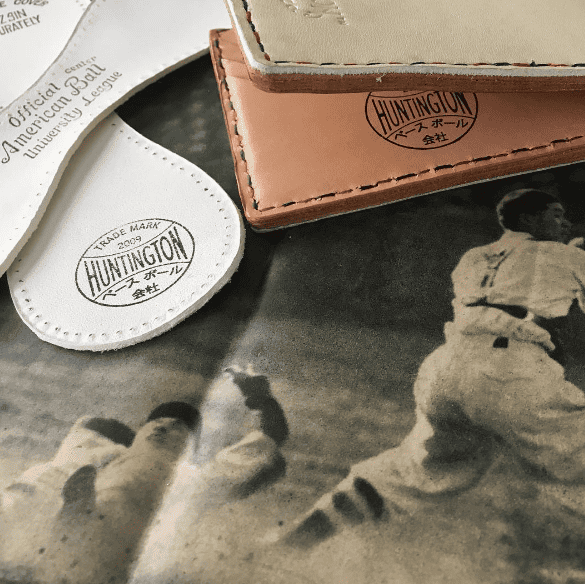
Huntington Base Ball Co. materials
How are you sourcing the materials for the balls? Where does the cork, leather, and stitching come from? How close are you able to stay to the original tools and materials?
Everything is domestically sourced with the exception of the core. If that business existed in the U.S., I’d happily pay a premium for it. Alas, it left our shores long before I was born. Beyond that, I’ve been able to source everything I need from the U.S., and it’s all top-tier material. In terms of historical accuracy, there are minor concessions I had to make — cowhide in place of horsehide, for instance. But that is minor, and there are workarounds to make the ball feel the same as a new original would have.
Fortunately, the core hasn’t changed at the top of the line in over 100 years, so that’s not a worry. Even before that, it didn’t really feel any different, it just wasn’t as durable over long periods, and you’d have to play with the same ball for a long time before it failed. So, “same feel” and “more durable” were areas where I was willing to stray from the path of “historically accurate”, makes sense to me anyway.

Cross-section of a cork-ball from Popular Mechanics (1910)
What exactly is the core of a base ball made of? Are you creating that from nothing, shaping it for the leather?
The core of the baseball consists of a cork ball at the very center to give the ball resiliency. The cork is covered in two layers of rubber for durability, then wound with wool and finished with a fine thread to give it a smooth surface. Those are all machine processes with tight tolerances that I cannot duplicate consistently by hand, so I purchase that component.
I’ve done it once or twice by hand, and it’s really something that should be done by machine. To hand-wind something like that and get it to be perfectly round and exactly the correct size and weight is more work than I can do myself.

Huntington Base Ball Co. Ball Cap

Huntington Base Ball Co. Ball Cap (Custom Leather Strap Detail)
You’ve had ball caps in your inventory before, made with a unique take on the elastic strap. Was the addition of the leather strap a way for you to be involved in the hat-making process? Did you look at fitted caps or snapback options? How did you land on the short-brimmed cap design?
The ball caps are great, I love having them in the lineup. The leather strap detail you are referring to is a patent-pending solution. It really has nothing to do with vintage baseball specifically, but rather a hat fitting systems in general. I love a fitted cap, but as a business, it’s too unpredictable. If I order a run of fitted hats I really have to guess about what’s going to sell, risk selling out of certain sizes, and have to turn people away if their size is outside of our normal size run.
My solution solves all of that with a true one-size that works on a very broad spectrum of sizes. I’m not a big fan of hardware, and plastic snaps just don’t look good to me. The leather detail on my system is really a nice finishing touch. It ages beautifully, as leather does, and needs no adjustment from person to person or wear after wear. I’m very happy with the way it turned out.
I’m not a big fan of hardware, and plastic snaps just don’t look good to me. The leather detail on my system is really a nice finishing touch. It ages beautifully, as leather does, and needs no adjustment from person to person or wear after wear. I’m very happy with the way it turned out. Aesthetically, it fits right in with my other leather goods, which was definitely a part of it too. Same with the slightly shorter brim. It’s a 1930s style, which is longer than the early short brims but slightly shorter than a modern brim. It has an old quality to it, without being overly specific.
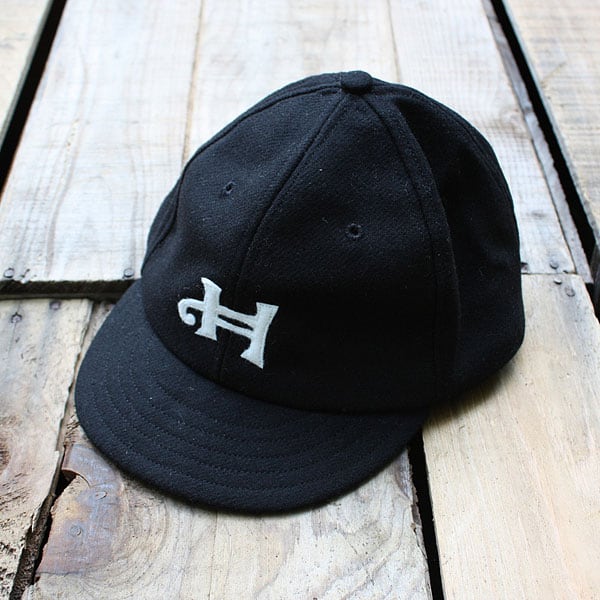
Huntington Base Ball Co. Ball Cap
Did you design the HBBC logo? Outside of the making of the balls, how involved are you in the visual look of the brand?
My friend Dan Wallis laid down much of what would become the HBBC logo. I’ve tweaked it some, and spun it off in a few different directions, but he did the original layout. For the most part, I’ve designed pretty much everything since then, but Dan is still my go-to guy when I need a critical eye on something I’ve drawn up.
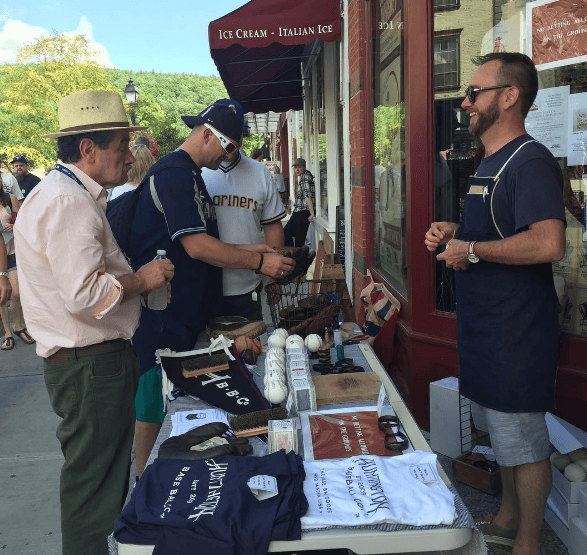
William Peebles (R) and baseball writer John Thorn (L) at the HBBC sidewalk booth during the Hall of Fame Induction Weekend in Cooperstown, NY
You’ve had booths at a few events, Renegade Craft Fair as well as the Baseball Hall of Fame Induction weekend. What role do these events play in your business?
I love public events. Much of what I do is done by myself in my workshop so it’s fun to take the pieces on the road and get them in front of people. There are so many great conversions that come about just by being there. That’s my favorite part. Everyone seems to have some connection, big or small, and if you’re drawn into the booth, you’ve got a reason and the conversations are very easy. I’ve met some really great people with interesting baseball stories and connections just through standing there with a half-sewn baseball in my hand.
Thank you and appreciation to photographer Ron Cowie for the use of his Huntington Base Ball Co. images.

